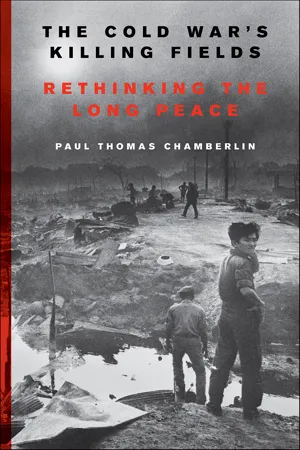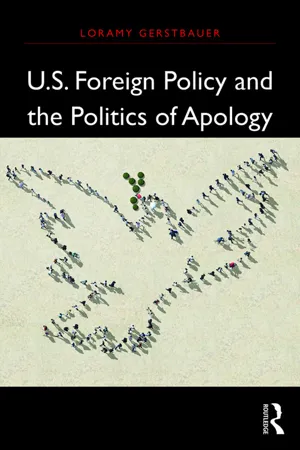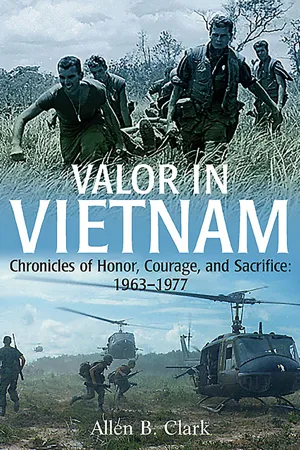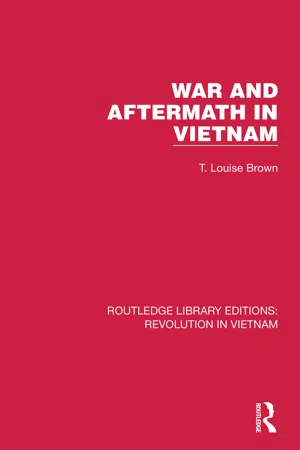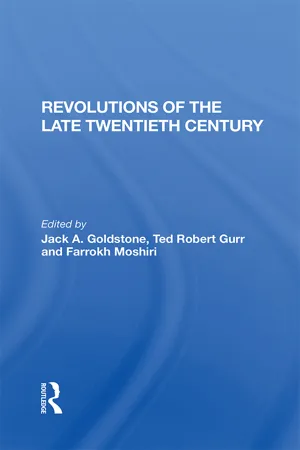History
Fall of Saigon
The Fall of Saigon refers to the capture of Saigon, the capital of South Vietnam, by North Vietnamese forces on April 30, 1975, marking the end of the Vietnam War. The event led to the reunification of Vietnam under communist control and the evacuation of American personnel and Vietnamese civilians from the city.
Written by Perlego with AI-assistance
Related key terms
7 Key excerpts on "Fall of Saigon"
- eBook - ePub
The Soldiers' Story: An Illustrated Edition
Vietnam in Their Own Words
- Ron Steinman(Author)
- 2015(Publication Date)
- Wellfleet Press(Publisher)
THE Fall of Saigon
T hat Saigon fell at the end of April 1975 surprised no one. That South Vietnam fell so quickly, with almost no resistance, shocked the aggressive North Vietnamese Army and the world as well. Hanoi’s original plan called for capturing Saigon sometime in 1976. Hanoi started its attack in the northern provinces of South Vietnam and in the Central Highlands. Its army moved rapidly south. Hanoi wanted to cut the country in half, as the Viet Minh wanted in their war with the French and as North Vietnam wanted since the battle of Ia Drang Valley. Hanoi’s leaders believed the rest would be easy once the country had been divided in two.South Vietnam’s leadership, never any good in the best of times, crumbled as Hanoi’s forces advanced unchecked. President Thieu became passive, providing no leadership and issuing orders to his military that were as bizarre as they were foolish. Consequently, Thieu’s army fell apart, its leadership fled, and its troops deserted in droves, throwing down their arms and discarding their uniforms as they retreated. The general population panicked in the wake of the army’s collapse, and hundreds of thousands of people also ran away, clogging the roads and rivers and jamming the ports. With the irrational flight of the population and their so-called protectors, the inevitable end was near. It was all over for a country that had been living on borrowed time ever since the United States pulled out in 1973. The South Vietnamese feared the unknown as much as they feared the end of the tenuous lifestyle they had been leading. Soon after the start of their campaign, North Vietnam’s leaders realized they would reach their goal one year earlier than planned.Hanoi’s forces moved aggressively down the coast, and by April 1975, had Saigon surrounded. America’s last ambassador, Graham Martin, resisted planning the final evacuation from Saigon. He did not want to show the South Vietnamese that the United States had given up, but everyone knew it was the end of the line. The evacuation of the remaining Americans and those Vietnamese closely associated with the United States momentarily stalled. Evacuation plans were underway, anyway. Ships from the 7th Fleet filled the South China Sea off the coast of South Vietnam. Helicopters were ready to fly in a hurry during an assumed last-minute evacuation. American citizens and South Vietnamese departed on special flights in the last weeks of April. A task forced designated meeting points everywhere in Saigon where last-minute evacuees would board buses or get on helicopters to leave the country. The American embassy was under siege as thousands of frightened Vietnamese banged on the gates and climbed the walls, seeking a way out of their defeated country. - eBook - ePub
The Cold War's Killing Fields
Rethinking the Long Peace
- Paul Thomas Chamberlin(Author)
- 2018(Publication Date)
- Harper(Publisher)
Part IIThe Indo-Asian Bloodbaths and the Fall of Third World Communism
1964–1979Passage contains an image
7
Making a Quagmire in Vietnam
1961–1965Vietnam was a country divided at the Seventeenth Parallel. In the South, Western influence still reigned. The streets of Saigon, named for French military leaders, lined by ornate colonial façades and shaded by lush trees, bustled with activity. Cafés served cognac, escargots, and crêpes suzette while stylish boutiques sold the latest bikinis, jewelry, and perfumes from Paris. While the downtown still teemed with French soldiers and European businessmen, Vietnamese and Chinese districts that ringed the posh center city overflowed with native Saigonese and recent refugees from the countryside. In these quarters, the smells of incense and cooking pho hung in the damp air. This “great tropical metropolis,” one American reporter warned, “lies under the ominous shadow of Communist victory and entrenchment” in the distant North. The Viet Minh, driven by “fanatical dedication and zeal, iron discipline and terrifying efficiency,” were plotting to retake South Vietnam. Communist cadres moved through the Vietnamese neighborhoods, spreading Hanoi’s influence in the so-called wild south. Meanwhile, the denizens of Saigon carried on amid the corruption of the city and the crumbling edifice of European colonial power.1Seven hundred miles to the north lay the city of Hanoi. Ho Chi Minh’s forces took the former seat of the French colonial administration of Tonkin on October 9, 1954, as the French Expeditionary Corps abandoned the city. The monsoon rains that had shrouded the French withdrawal broke as the Communist columns reached the capital. Thousands of Hanoi’s citizens poured into the streets to greet the Viet Minh soldiers. Clad in the green uniforms of the People’s Democratic Republic of Vietnam, Communist troops entered the city in Soviet trucks, in jeeps, on bicycles, and on foot. Welcoming the Communists, residents unfurled banners emblazoned with slogans such as “Long Live President Ho.” Crowds cheered as Viet Minh soldiers brandished their weapons and towed American-made artillery pieces captured at Dien Bien Phu around Hoan Kiem Lake, in the center of the city. As power passed from the hands of the French to the Communists, some eight hundred thousand people, many of them Vietnamese Catholics, fled to the South. At the same time, one hundred thousand Vietnamese from the South moved to North Vietnam. However, another ten thousand revolutionaries remained in South Vietnam covertly.2 - eBook - ePub
- Loramy Gerstbauer(Author)
- 2016(Publication Date)
- Routledge(Publisher)
The South Vietnamese government had its own problems. The United States found itself in a Catch 22 with regard to supporting the South. The government in the South was dependent on the U.S., but as long as it received this support it was perceived as a puppet of the Americans and had a tough time establishing local legitimacy. The South never produced a leader to unite the country as Ho Chi Minh did in the North (Nguyen 2002, 136–137). There were also substantial problems with government corruption in the South, in addition to divisions between the Catholic minority and Buddhist majority and various ethnic groups. The elitist and unpopular Diem government ended in a coup, which the U.S. denied supporting. Subsequent governments, military or otherwise, also suffered from corruption (Hunt 1995, 10).Blame for Saigon’s Fall
The Paris Peace Accords were signed in 1973, and official U.S. military involvement in Vietnam ended in August of that year. Not long after, in April 1975, the South Vietnamese capital of Saigon fell to the Communist forces of the North. Despite the difficulties of working with South Vietnam, and the sometimes false sense of progress, some accused the U.S. of making misleading promises to the South at the end of the war and essentially abandoning them. The final peace agreement allowed for over 100,000 North Vietnamese troops to stay in South Vietnam, recognized the National Liberation Front, and withdrew the remaining U.S. forces. These conditions made it difficult to secure an independent non-Communist South Vietnam. Nixon and U.S. Secretary of State Henry Kissinger were willing to withdraw from Vietnam on these terms, assuming that as long as there was a “decent interval” between the U.S. departure and the collapse of South Vietnam, the U.S. had achieved “peace with honor” (Fry 2006, 166). Nixon and Kissinger claimed in later writings and memoirs that the South could have survived if the North had not violated the peace agreement and had observed the cease-fire and other treaty provisions and if Congress had allowed there to be consequences for Hanoi’s reinforcement of troops (Anderson 2005, 111). Nixon would claim that Congress threw away the achievements of twelve years of fighting: “When we signed the Paris Peace agreement in 1973 we had won the war. We then proceeded to lose the peace” (Foster 1990, 6–7). Whoever in the U.S. is at fault, Saigon officials felt abandoned by their former ally. When South Vietnamese president Nguyen Van Thieu resigned in April 1975, he blamed the U.S. for abandoning Vietnam (Anderson 2005, 115). Ambassador Bui Diem, the South Vietnamese representative in the U.S., noted that American withdrawal was shameful and the strategy was based on American self-interest with “callous disregard of the consequences their actions would have on a nation of twenty million people …” (113). - eBook - ePub
Valor in Vietnam
Chronicles of Honor, Courage, and Sacrifice: 1963-1977
- Allen B. Clark(Author)
- 2013(Publication Date)
- Casemate(Publisher)
CHAPTER 18
Evacuation of Saigon, 1975
BRIGADIER GENERAL RICHARD E. CAREY , USMCCAPTAIN GEORGE W. PETRIE , USAThe tumult and the shouting dies;The captains and the kings depart:Still stands Thine ancient sacrifice,An humble and contrite heart.Lord God of Hosts, be with us yet,Lest we forget-lest we forget!—Rudyard Kipling (1865–1936) “Recessional”FINAL DAYS
The swift collapse of South Vietnam’s final defenses, while shocking and dramatic, was also inevitable. Later wrote former South Vietnamese Lt. Gen. Dong Van Khuyen, chief logistician of the Republic of Vietnam Armed Forces (RVNAF), “the survival of South Vietnam depended in a large measure on the viability of the RVNAF. The RVNAF performance, their capabilities to win or lose, in the final analysis depended entirely on the level of U.S. financial and materiel aid.” Those somber lines closed his book on the war.As Communist forces closed in on Saigon, valiant evacuation efforts by American military forces resulted in all the remaining Americans in South Vietnam being taken to safety by aircraft ferrying them to ships standing offshore, along with 130 thousand at-risk South Vietnamese. Many more South Vietnamese fled by whatever possible means, land, sea, and air.For those who remained in Vietnam the future proved ominous indeed. The Communists arrested many thousands and incarcerated them in primitive “re education” camps, where some languished for nearly two decades. Thousands more perished due to sickness, malnutrition, or harsh treatment. A quarter century after the war ended those figures were estimated, at 400 thousand taken prisoner and 50 thousand dead.Estimating the human costs of the war, let alone those material in nature, was difficult. Douglas Pike calculated that South Vietnam’s military forces had lost 200 thousand killed and three times as many wounded. But South Vietnamese civilian casualties, said Pike, were “staggering,” amounting to 465 thousand killed and 935 thousand wounded. While some of the civilians were hurt by the spillover of military battles, many more were deliberately targeted by Communist forces, who shelled and rocketed cities and refugee convoys, rounded up and executed civilians, and sent terrorist bombers into pagodas and schoolyards. - eBook - ePub
- Anthony James Joes(Author)
- 2007(Publication Date)
- The University Press of Kentucky(Publisher)
5
Saigon 1968
Named for the lunar month of Tet, the great offensive of January 1968 was the biggest operation ever launched by the Communist forces in South Vietnam and their North Vietnamese sponsors. It was the most spectacular event of the Vietnamese war. And it was the greatest defeat sustained by the Communists in that entire conflict.The Genesis and Rationale of the Tet Offensive
By 1965, the United States had become heavily involved in what many Americans described as a “limited war.” But there was certainly nothing limited about it on the Communist side; the state of North Vietnam was making an all-out effort. By spring 1967, Communist losses had reached horrendous levels. Hanoi was requiring its people to suffer casualty rates twice those of the Japanese in World War II. In 1969, General Vo Nguyen Giap, commander of the North Vietnamese army (NVA), told an interviewer that between 1965 and 1968, Communist losses amounted to six hundred thousand out of a total Vietnamese population of perhaps thirty-three million.1 Morale among the Communist-led Viet Cong (VC) was becoming dangerously low.In contrast, from 1960 to the summer of 1967, thirteen thousand Americans were killed in action in Vietnam, about the same number of Americans who died in that period by falling off the roofs of their houses, or one-fifth the number of Americans killed annually in the United States in highway accidents. World War II claimed fully 48 percent of the American GNP; the Korean conflict took 12 percent. But in 1967, only 9 percent of the American GNP was going to the military, of which one-third was for the war in Vietnam.2 At its height in 1968, the number of U.S. military personnel in South Vietnam equaled about one-third of 1 percent of the total U.S. population. In summary, it is no great exaggeration to say that “in late 1967 the Allies were winning the war, and the Communists were losing it.”3 - eBook - ePub
- T. Louise Brown(Author)
- 2021(Publication Date)
- Routledge(Publisher)
10 The war in five capitals—the international context of the Vietnam War
The Saigon regime could not have existed for long without the patronage of the United States. Conversely, the revolutionary forces in the South would not have proved such a serious threat if it had not been for generous material support from China and the Soviet Union. Despite these realities, the relationships between the various nations intimately involved in the conflict cannot be understood by a cursory appraisal of their relative status in the world. Saigon and Hanoi were not subservient to the greater powers and relations were frequently troubled by the frustrations common to patron-client linkages. Saigon remained infuriatingly reluctant to heed US advice, while Hanoi, far from being a tool of Peking and Moscow, steered a course independent of the giants of the communist bloc.Paradoxically the greatness of a nation’s power and the control, at least of the mechanical and financial means by which the struggle was fought, could not, in the context of the Vietnam War, always be translated into effective leverage over the conflict’s political dimensions.Washington and Saigon
In the autumn of 1972, Henry Kissinger was appalled to find that the South Vietnamese president, Nguyen Van Thieu, was unwilling to comply with a US request to ratify an agreement arranged with North Vietnam. Thieu’s stubborn refusal to oblige was not the first time that real tensions had emerged between America and its client regime. Relations between the two governments had been bedevilled with problems from the very beginning.The problems had deep-seated roots. Although the US-GVN relationship was not a formal alliance, the link was exceedingly close owing to the inescapable fact that the GVN relied upon American support for its very existence. However, the degree of political intimacy and understanding was always limited by a vast cultural gap. The Americans had one perspective and one way of doing things and the South Vietnamese had another. Dynamic Americans barked commands, reduced the world and its ills to a neat set of statistics and browbeat the Vietnamese with the sheer forcefulness of their impeccable logic. Seeming to agree, the South Vietnamese would smile, nod their heads and then proceed to ignore completely any requests they found distasteful. Admittedly, however, this was sometimes the result of genuine misunderstandings brought about by a failure to communicate. - eBook - ePub
- Jack Goldstone, Ted Robert Gurr, Farrokh Moshiri(Authors)
- 2019(Publication Date)
- Routledge(Publisher)
The presence of U.S. troops on Vietnamese soil helped the Communists score a significant propaganda victory concerning charges of U.S. "neocolonialism." Although Washington made every effort to formally uphold the integrity, and therefore the legitimacy, of the Saigon regime, reality dictated otherwise. On the one hand, with the prestige of the United States and his own reputation at stake, Lyndon Johnson decided to "Americanize," or to take over, the prosecution of the Vietnam war, which then became a U.S. war. On the other hand, many Vietnamese officials, from top to bottom, keenly aware that their future and even survival depended on the U.S. presence, quickly revived their colonial mentality of the French time, catered to the new U.S. direction, and thus forfeited their claim of Vietnamese nationalist legitimacy. I do not mean to imply that there were no dedicated nationalists among the rank and file of the ruling elites, but their alternatives were either joining their colleagues on the insurgent side or being indifferent to the whole situation and just hoping for the best. For the Communistled revolution, the main target was no longer the "Saigon puppets" but the "U.S. imperialist aggressors," and the ongoing conflict became "Vietnam's resistance to American aggression for national salvation" (Ho Chi Minh 1967: 87).Between 1965 and the now famous Tet offensive of 1968, Hanoi lacked the firepower of the U.S. forces, but it did create problems, military and morale, for the U.S. side. On the political front, the influx of refugees to major urban centers, such as the capital of Saigon and the strategic coastal city of Da Nang in central Vietnam, also presented the South Vietnam regime with a time bomb for potential trouble that could destabilize the already weakened government.The Tet offensive did not achieve the military goals or create the civilian uprisings that North Vietnam had hoped for. It did nevertheless provide the southern revolution with a significant psychological success because of its immense impact on U.S. public opinion, although a Communist general who was a key figure in the Tet campaign later declared to Stanley Karnow that "as for making an impact on the United States, it had not been our intention—but it turned out to be a fortunate result" (Karnow 1984: 545). Obviously the reference was to the ongoing U.S. presidential election campaign. The military cost of the Tet offensive to the revolutionary side turned out to be enormous, and perhaps the Hanoi strategists were forced to scale down the offensive so that it just managed to preserve its revolutionary momentum and propaganda effectiveness, at least until the Easter offensive of 1972 some four years later. Again, the key purposes of that offensive were obviously both the military objective of territorial gain, to be used as leverage at the ongoing Paris peace talks, and the political impact on the 1972 U.S. presidential election.
Index pages curate the most relevant extracts from our library of academic textbooks. They’ve been created using an in-house natural language model (NLM), each adding context and meaning to key research topics.

